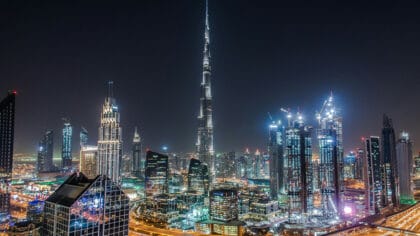Reducing climate change is a job not just for our country but for the whole world, and one very cool way that countries are collaborating is with something called… interconnectors.
Now, that might sound like a complicated sort of thing but it’s actually really simple.
Interconnectors are basically really big and VERY long, high voltage cables that connect the electricity systems of neighbouring countries. They might run under the sea, underground or via overhead cabling. The UK is connected with Europe with interconnectors that lie at the bottom of the North Sea and English Channel.
Because they’re a way of sharing electricity, we can pass any surplus electricity we might have to another country who needs it. Or receive a supply from overseas when WE need a top up.

It’s good to share, but not just because it helps make sure every one has enough electricity to power their homes, schools or businesses – it’s also a great way to make the most of renewable sources which, whilst clean, are more intermittent. If the sun doesn’t shine or wind doesn’t blow, we can’t generate solar or wind power. Interconnectors allow us to import clean energy when we need it to where it’s needed within a matter of minutes.
So rather than having to top up with fossil fuels, we can use renewable sources from other country – reducing the amount of pollution in the environment.
That will help us reach net zero – the balance between the amount of greenhouse gas produced and the amount removed from the atmosphere.
And the amazing thing is, it’s happening already! There are massive interconnectors linking the UK with France, Belgium, Norway and the Netherlands.
As you can imagine these cables are very long. One – the North Sea Link, connects our supply with Norway. It’s currently the longest in the world at 720 kilometres, although that title is expected to be handed to a interconnector in development that will connect us with Denmark.

You may be thinking: ‘How do you get a cable safely to another country across to the bottom of the sea?’ After all, the North Sea can be 700 metres deep. You’d need to be very good at diving to get that far down – right?
Well, no. Nobody needs to get wet! Ships move the cables to the right place and underwater robots dig channels for them to sit in.
And don’t worry, they make sure not to disturb the marine life that lives nearby too much.
If you’re interconnecting between countries on the continent and there are mountains in the way, that can be a HUGE job – especially when those working together speak different languages!
Fortunately engineering is something of a universal language and there are a ton of solutions to help get the job done.
If you don’t want to go over a mountain, you can always go through it, building special tunnels to carry the cables safely, like one that links France with Spain under the Pyrenees.

Co-operating with other countries near and far is a great way to make sure we all have enough electricity – and make the most out of renewable sources.
In the next ten years almost ALL of the energy we get from the innterconnected network will be from zero carbon energy sources. This will remove a whopping 100 million tonnes of carbon emissions which is equivalent to planting approximately 4.5 billion trees or taking up to 64 millions cars off the road.
Marina Ventura: Energy Explorer is made with support from Grid for Good by the National Grid







